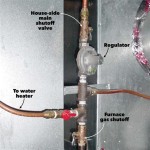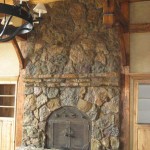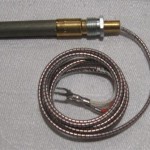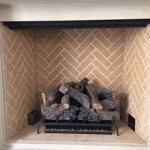Outdoor Fireplace Designs: Plans and Considerations
Outdoor fireplaces represent a significant upgrade to any outdoor living space, providing warmth, ambiance, and a focal point for social gatherings. Planning an outdoor fireplace requires careful consideration of design, materials, building codes, and safety regulations. Understanding the options available and the specific needs of the intended space is crucial to a successful project.
This article explores various outdoor fireplace designs, focusing on the planning stages and key considerations that will ensure a functional and aesthetically pleasing addition to any landscape. From material selection to structural integrity, a comprehensive understanding of outdoor fireplace construction is essential for both DIY enthusiasts and those seeking professional installation.
Understanding Fireplace Types and Design Options
The first step in planning an outdoor fireplace is determining the type of fireplace that best suits the space and intended usage. Options range from simple, prefabricated units to complex, custom-built structures. Each option offers different advantages in terms of cost, durability, and design flexibility.
Prefabricated Fireplaces: These are pre-built units, typically made of concrete, metal, or stone veneer. They offer ease of installation and often come in kit form, requiring minimal assembly. Prefabricated fireplaces are a good option for those seeking a quick and relatively inexpensive solution. However, design options are limited to the available models. They are typically fuel efficient and designed for cleaner burning. This often means that they are only designed to burn specific types of wood, or gas logs.
Custom-Built Masonry Fireplaces: Constructed from materials like brick, stone, or concrete blocks, these fireplaces offer unparalleled design flexibility. They can be tailored to match the architectural style of the home and surrounding landscape. Custom-built fireplaces require more planning, labor, and expertise, resulting in a higher overall cost. However, the aesthetic appeal and long-term durability often justify the investment. They are capable of burning a wider range of wood, and often create a more traditional fire experience.
Chiminea Fireplaces: Typically crafted from clay or cast iron, chimineas add a rustic and charming touch to outdoor spaces. Their distinctive shape channels smoke upwards, making them a relatively efficient heating option. Chimineas are portable and easy to set up, making them ideal for smaller patios or decks, but may not provide as much radiant heat as a larger fireplace. They provide a unique aesthetic, and often are a good starting point for those not quite ready to make the leap into a permanent installation.
Fire Pits with Surrounds: While technically not fireplaces, fire pits can be integrated into a fireplace design with a custom-built surround. This approach provides the warmth and ambiance of a fire pit with the visual appeal of a more traditional fireplace structure. The surround can be constructed from various materials, such as stone, brick, or concrete, allowing for seamless integration with the surrounding landscape.
Design considerations extend beyond the basic fireplace type. Factors such as the size and shape of the firebox, the height of the chimney, and the inclusion of features like wood storage or built-in seating areas all contribute to the overall design. Thoughtful planning is essential to ensure that the fireplace is both aesthetically pleasing and functionally efficient. Consider incorporating features like a raised hearth, which not only enhances the visual appeal but also provides a comfortable place to sit and enjoy the fire. Mantelpieces can add architectural interest and provide a space for displaying decorative items. Built-in storage for wood or other supplies can improve organization and convenience.
Material Selection and Building Regulations
The choice of materials for an outdoor fireplace significantly impacts its durability, aesthetics, and overall cost. Selecting the right materials requires considering the local climate, the desired aesthetic, and the project budget. Understanding building codes and regulations is equally important to ensure compliance and safety.
Material Options: Brick is a classic choice for outdoor fireplaces, offering durability, weather resistance, and a timeless aesthetic. Stone provides a natural and rustic look, with various types of stone available to match different design styles. Concrete blocks are a cost-effective option that can be finished with stucco or stone veneer to achieve a more refined appearance. Metal, particularly stainless steel, is often used for prefabricated units or for accent features on custom-built fireplaces. Clay is primarily used in the construction of Chiminea-style fireplaces.
When selecting materials, consider the local climate and exposure to the elements. In areas with harsh winters, choose materials that are resistant to freeze-thaw cycles. For coastal locations, salt-resistant materials are essential. The durability and maintenance requirements of each material should also be considered. Some materials, such as natural stone, may require periodic sealing or cleaning to maintain their appearance.
Building Codes and Permits: Before starting any outdoor fireplace project, consult with local building officials to determine the applicable codes and regulations. Most jurisdictions require a permit for outdoor fireplace construction, and the permit process typically involves submitting detailed plans for review. Building codes often specify requirements for foundation depth, chimney height, firebox dimensions, and clearances from combustible materials. Failure to comply with building codes can result in fines or the required removal of the fireplace.
Safety Considerations: Safety is paramount when building an outdoor fireplace. Ensure that the fireplace is located a safe distance from structures, trees, and other combustible materials. A non-combustible hearth extension should be provided in front of the firebox to protect against sparks and embers. The chimney must be tall enough to ensure proper drafting and prevent smoke from blowing back into the outdoor living area. Consider installing a spark arrestor on the chimney to prevent embers from escaping and potentially igniting nearby vegetation. Regular maintenance, including cleaning the chimney and inspecting the firebox for cracks or damage, is essential for safe operation.
Choosing materials that complement the surrounding landscape and architectural style is crucial for achieving a cohesive design. Consider the color, texture, and pattern of the materials, and how they will interact with the existing elements of the outdoor space. For example, a fireplace constructed from natural stone can blend seamlessly with a rustic landscape, while a fireplace with sleek concrete lines can complement a modern architectural style. Coordinating the fireplace materials with other outdoor features, such as patios, walkways, and retaining walls, can create a unified and harmonious outdoor living area. Attention to detail in material selection can significantly enhance the overall aesthetic appeal of the fireplace.
Planning for Functionality and Integration
Beyond aesthetics, the functionality of an outdoor fireplace is a critical consideration. The fireplace should be designed to provide ample warmth, proper ventilation, and ease of use. Integrating the fireplace into the overall outdoor living space requires careful planning of layout, seating arrangements, and landscaping.
Warmth and Ventilation: The size and shape of the firebox determine the amount of heat generated by the fireplace. A larger firebox can accommodate larger fires, providing more warmth. The chimney design is crucial for proper ventilation. A chimney that is too short or too narrow can restrict airflow, causing smoke to billow back into the outdoor area. The fireplace should be oriented to take advantage of prevailing winds and minimize the impact of downdrafts.
Seating and Layout: Consider the seating arrangement around the fireplace. Built-in benches or seating walls can provide comfortable and permanent seating options. Portable outdoor furniture, such as chairs and sofas, offers flexibility in arranging the seating area. The layout should allow for easy access to the fireplace for tending the fire and adding wood. A clear pathway should be maintained around the fireplace to ensure safe movement.
Landscaping and Integration: Landscaping can play a vital role in integrating the fireplace into the outdoor living space. Plantings can soften the hard lines of the fireplace structure and create a more natural setting. Low-lying plants can be used to define the area around the fireplace, while taller plants can provide privacy and shelter from the wind. The landscaping should be designed to complement the style of the fireplace and the surrounding landscape. Consider using fire-resistant plants near the fireplace to minimize the risk of fire hazards.
Additional Features: Consider adding features that enhance the functionality and enjoyment of the outdoor fireplace. A built-in grill or cooking surface can transform the fireplace into an outdoor kitchen. A wood storage area near the fireplace can provide convenient access to fuel. Lighting fixtures can illuminate the area around the fireplace, creating a warm and inviting ambiance. Consider incorporating a water feature near the fireplace to add a soothing and tranquil element to the outdoor space. These additional features can elevate the functionality and aesthetic appeal of the outdoor fireplace. Shelving and mantelpieces can also add to the aesthetic of outdoor spaces.
Careful planning is essential for creating an outdoor fireplace that is both functional and aesthetically pleasing. By considering the type of fireplace, material selection, building codes, and integration into the outdoor space, it is possible to create a focal point that provides warmth, ambiance, and enjoyment for years to come. Whether opting for a simple prefabricated unit or a complex custom-built structure, a well-planned outdoor fireplace can enhance the value and appeal of any property.

Outdoor Fireplace Design Ideas Getting Cozy With 10 Designs Unilock

Your Diy Outdoor Fireplace Headquarters Plans And Kits By Backyard Flare Llc Tucson Arizona

Fireplace Planning Guide Kits Outdoor

Outdoor Fireplace Plans

Premium Plans Html

Easy Outdoor Fireplace Design Plans Cad Pro
:max_bytes(150000):strip_icc()/chrisjulia-971f3f9eb708447bbd364fc7f4a16280.jpg?strip=all)
10 Free Outdoor Fireplace Construction Plans

Outdoor Fireplace Plan Your Diy Headquarters

Pima Diy Outdoor Fireplace Plan

Easy Affordable Outdoor Fireplace Design Plans Cad Pro








